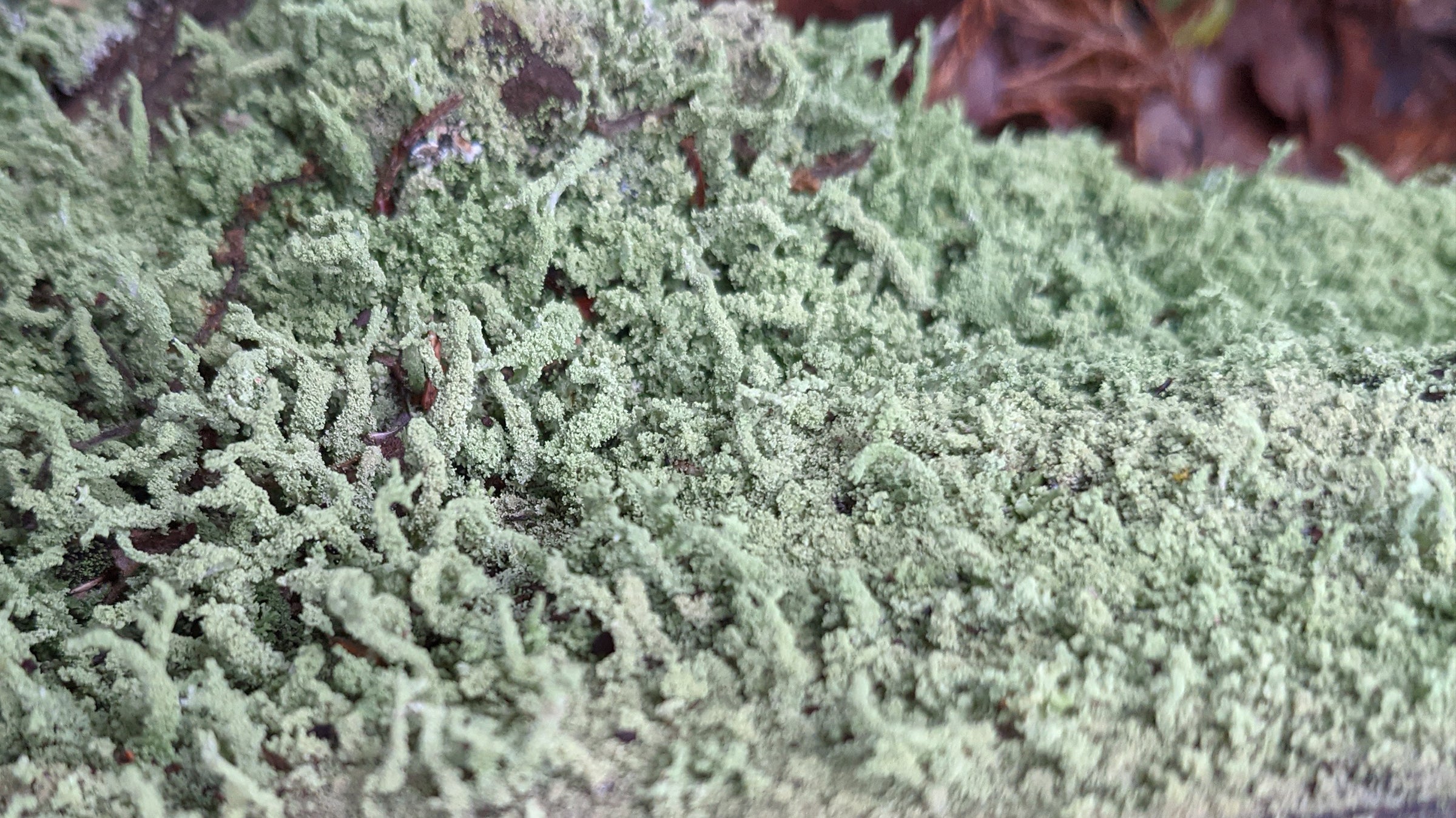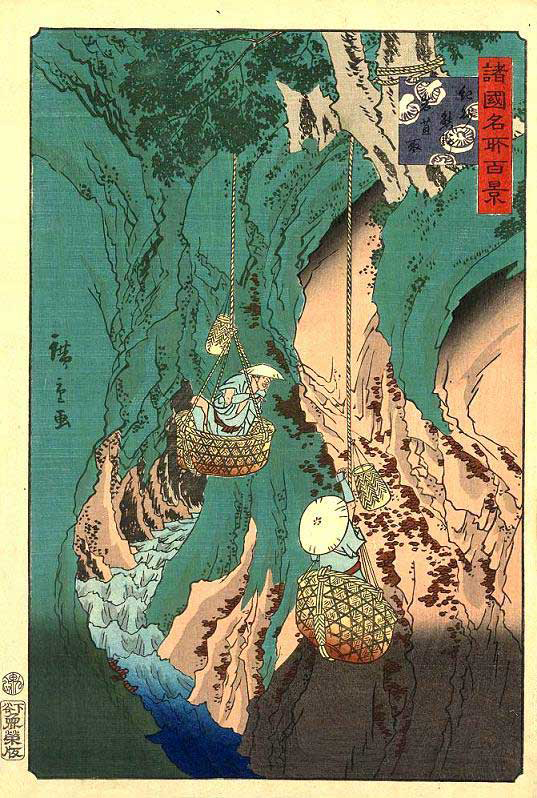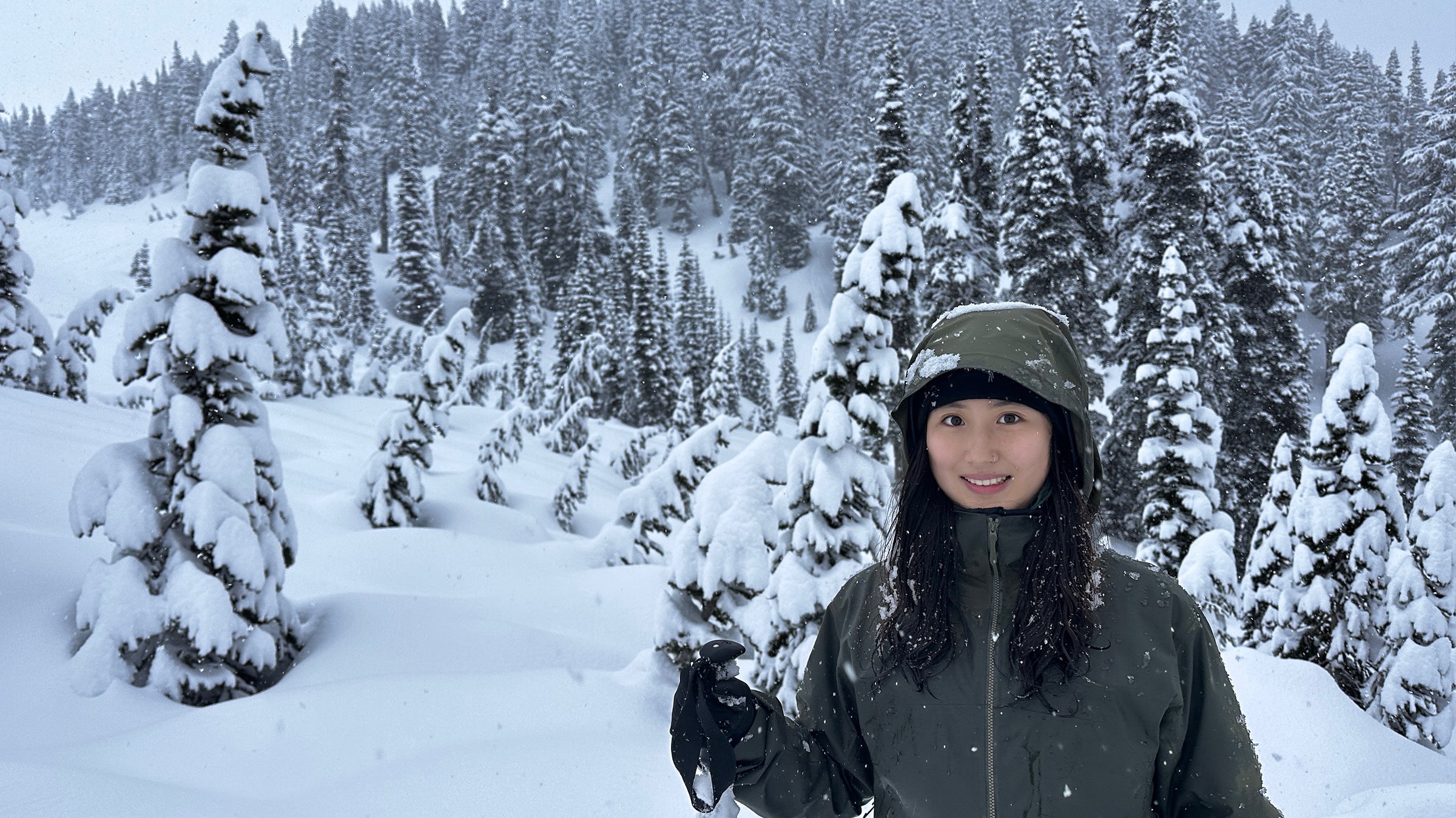
Lichens are beautiful, sometimes otherworldly, in ways that aren’t overlooked by arts and culture. They also have had medicinal and culinary uses for millennia. As explored in What the Heck is a Lichen, our introductory blog, lichens are complex organisms created by a symbiotic relationship between a fungus and an algae or cyanobacteria. The fungus provides the structure and the algae does the photosynthesis.
Lichens in arts and food
The unique biochemical compounds lichens produce have made them useful as dyes for hundreds of years. They were one of the key sources of dye until the 19th century and the invention of synthetic dyes, a much cheaper and easier source.
Classical Greek and Roman cultures used lichens for creating dyes, with purple and blue portraying the high status of the wearer. The most famous lichens that created blue and purple are known collectively as the orchil lichens. However, this dye faded with light exposure, so orchil dyes were often combined with a dye extracted from a shellfish native to the Mediterranean and Atlantic coasts. Like an ancient equivalent of a “knock-off brand,” the orchil dye also helped “stretch” and often imitate the much more valuable shellfish dye.

Yarn dyed in a traditional way with orcein from lichens. The different shades were obtained by dipping the skeins additional times in the dye bath. (Photo: W. Carter, Creative Commons)
There are different methods for creating the dye, including fermenting the lichen, simmering it in low boiling water, or submerging it in ammonia for several months. Not long ago, human urine was used for the same purpose as the ammonia method. A rather interesting Venetian recipe from 1540 calls for soaking a lichen for days in not just stale human urine, but potash, saltpetre (potassium nitrate), arsenic and sal gemmae (rock salt). One can imagine this could turn out to be quite a smelly process.
Because lichens are very slow growers, most folks that practice lichen dyeing do what is called “salvage botany” for gathering the lichens to avoid damaging colonies. For example, they may harvest lichens from fallen tree branches or lichens that have been dislodged from growing surfaces by weather events.

In this 1860 illustration, "iwa-take" hunters gather the iwa-take lichen in mountainous areas where the lichen grows on cliff rocks. In this life-risking process, the hunters sit in baskets and are lowered where they can gather the lichen.
Many lichens contain acids that hold what are called “precursors of colors,” meaning that a fixative is not necessary to achieve the desired color result. Colors for lichen-based dyes are quite stunning. From purple, to pink, to mustard yellow. Red is one of the rarest colors. Getting green requires the careful addition of a toxic modifier called copper sulfate, not a process for the novice! Fibers that take the dye best are cellulose fibers such as cotton and linen. Animal fibers like wool also work. These dyed fibers are then used for things like clothing, rugs, and textile art.
When it comes to eating or drinking a lichen, some can be consumed although great care must be taken due to food safety issues and potent toxins that many lichens have.
Just a few of the edible lichen species include Bryoria fremontii, “Icelandic lichen” (Cetraria islandica), “Rock Tripe” (Umbulicaria), Parmelia (known in Telugu as “rathapu” or “rock flower), and Lungwort" or "lung lichen" (Lobaria pulmonaria).
The most popular of the edible lichens is the "Caribou lichen," which are actually a number of terricolous (ground-growing) species, with the majority belonging to the genera Cetraria and Cladonia. This lichen is popular because it has less harmful acid. It’s called the Caribou lichen because it is a crucial component of the Caribou diet. Their stomachs are able to tolerate this lichen’s acid in ways ours are not. It is not uncommon for hunters like the Inuit to extract and consume the lichen from the Caribou stomach. They consider it a warm post-hunt delicacy.
Cooks that want to leach the acid from this lichen can do it without having to pass into a Caribou’s belly. After several washes, the lichen soaks overnight in water. The cook then boils it lightly with some baking soda. Once dried, it can be ground and used as a bread extender. One recipe combines it with wheat flour to make a pizza!
Historically, describing lichen use in human cuisine could fill pages. These here are just a few examples. In the mid 18th century, Europe suffered frosts and a drought that caused a famine. During this time, people used lichens as a food source. The Turks sometimes made jelly from the Oakmoss lichen (Evernia prunastri). Egyptians also imported this lichen to use for bread baking. Some Napalese ethnic groups steam lichens for curries, pickles, soups and a traditional dish called Sargyangma. This is a type of sausage with pork, pork blood, eggs, rice and spices. The Japanese have harvested Umbilicaria, known as “iwatake,” at least as far back as the 17th century. Many indigenous peoples in North America have been cooking with countless species of lichen for centuries.
Because lichens have carbohydrates, they’ve been useful for alcohol production. Long ago, Siberian monks integrated the lung lichen in beer brewing at their monastery. In the 1800’s for about half a century, Sweden led the world in lichen alcohol production in a drink called “lichen brandy.” It was viewed as an alternative to grain alcohol. Lichen brandy was a big hit, and it was also used in the making of Akvavit, a traditional caraway-flavored spirit.
And let’s not overlook the use of lichens in cosmetics and perfumes! Today the major perfume lichens are Oakmoss and Treemoss (Pseudevernia furfuracea). Lichen extracts are fixatives and provide what is called “base notes” in a perfume, where floral essences supply the “top notes.” In perfumery, base notes are less volatile, evaporate slowly and so are not perceived until some time after application.

1851 advertisement from Australian newspaper for "Iceland Moss Candy."
Lichens in medicine
Before the ease of modern bottled medicine, people relied more on nature to cure ailments. Lichens were one of the go-tos and there are countless applications.
The Lung lichen actually got its common name based on medical uses. It reminded medieval European healers of lung tissue, and they took this as a sign it was a remedy for lung ailments. The Hesquiat people of British Columbia used it as a treatment for coughing blood, and it was also used for lung troubles in Darjeeling and Sikkim. Bryoria fremonti is used by many indigenous peoples for ailments ranging from broken bones, digestive problems, reducing swelling, and even removing warts. In the Russian Far East, Usnea filipendula was used as a powder to treat wounds. The lichen compound usnic acid (in extracts of Usnea species) has been used recently in antibiotic salves, deodorants, and herbal tinctures. The yellow pigment, parietin, is found in lichens like Xanthoria parietina, and protects against UV radiation. It could become a natural future sunscreen.
Currently, lichen metabolites are being investigated for anti-viral and anti-tumor properties but not many are actively used in medicine today
Thanks to Liz Bowman for her edits and input
SOURCES
Blum, Andrea. “Creating Lichen Dyes” (https://www.instructables.com/Creating-Lichen-Dyes-Letharia-vulpina-or-Wolf-Lich/)
Devokta, Shiva; Chaudhary, Ram Prasad; Werth, Silke; Scheidegger. “Indigenous knowledge and use of lichens by the lichenophilic communities of the Nepal Himalaya.” Journal of Ethnobiology and Ethnomedicine. 13:15, 2017.
Joulain, D & Tabacchi, R. (2009). Lichen extracts as raw materials in perfumery. Part 1: oakmoss. Flavour and Fragrance Journal, 24, 49-61.
Kawagoe , S. (1925). The market fungi of Japan. Transactions of the British Mycological Society, 10, 201-206.
Kok, A. (1966). A short history of the orchil dyes. The Lichenologist, 3, 248-272.
Laning, Chris. “Orchil: The Poor Person’s Purple,” Tournaments Illuminated, 1997.
Lichens of North America (https://www.sharnoffphotos.com/lichen_info/biology.html)
Australian Lichens: Lichens and People - Dyeing. An Australian Government Initiative (https://www.anbg.gov.au/lichen/lichens-people-dyeing.html)



